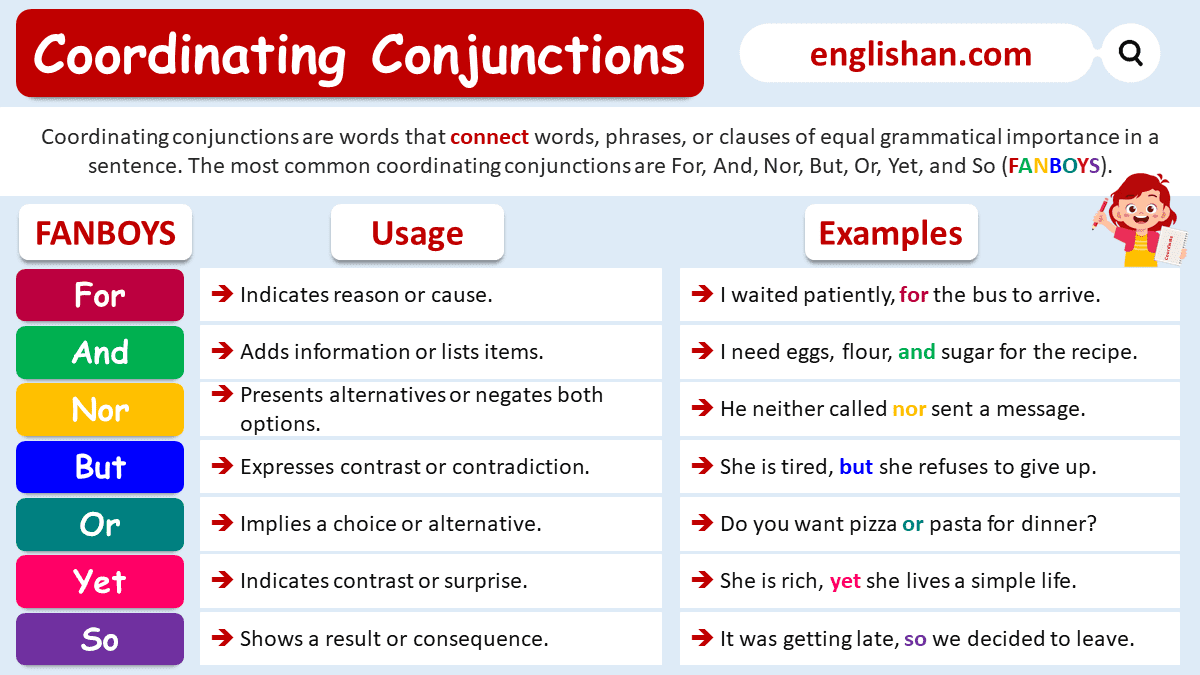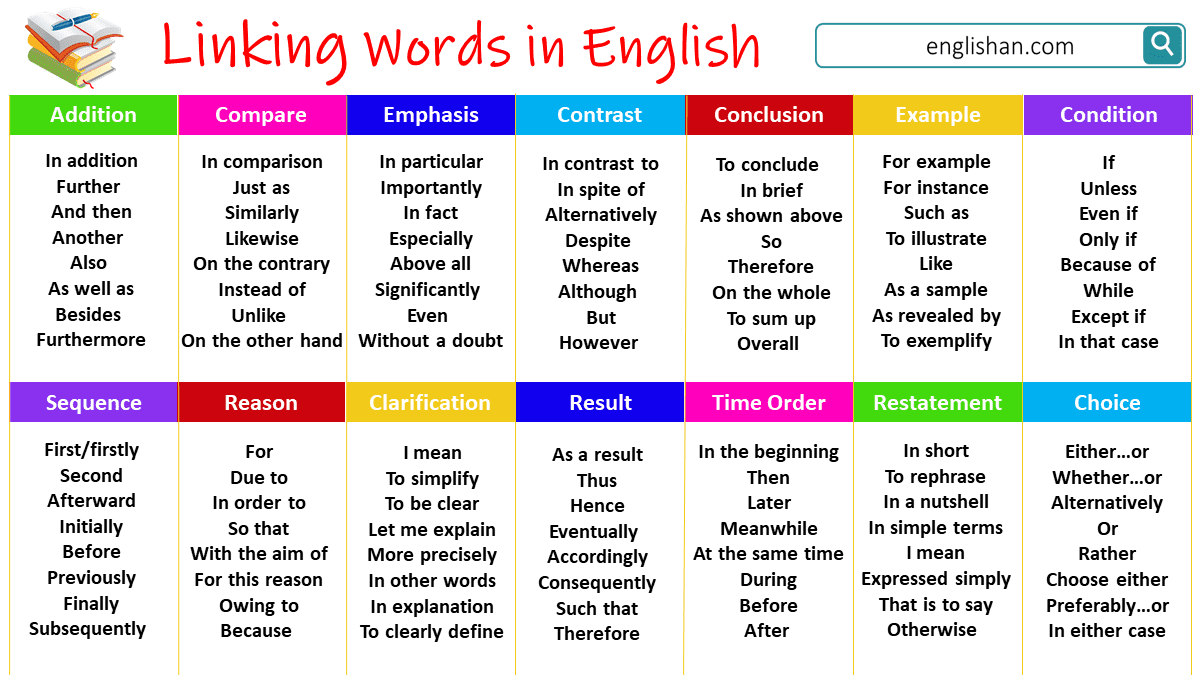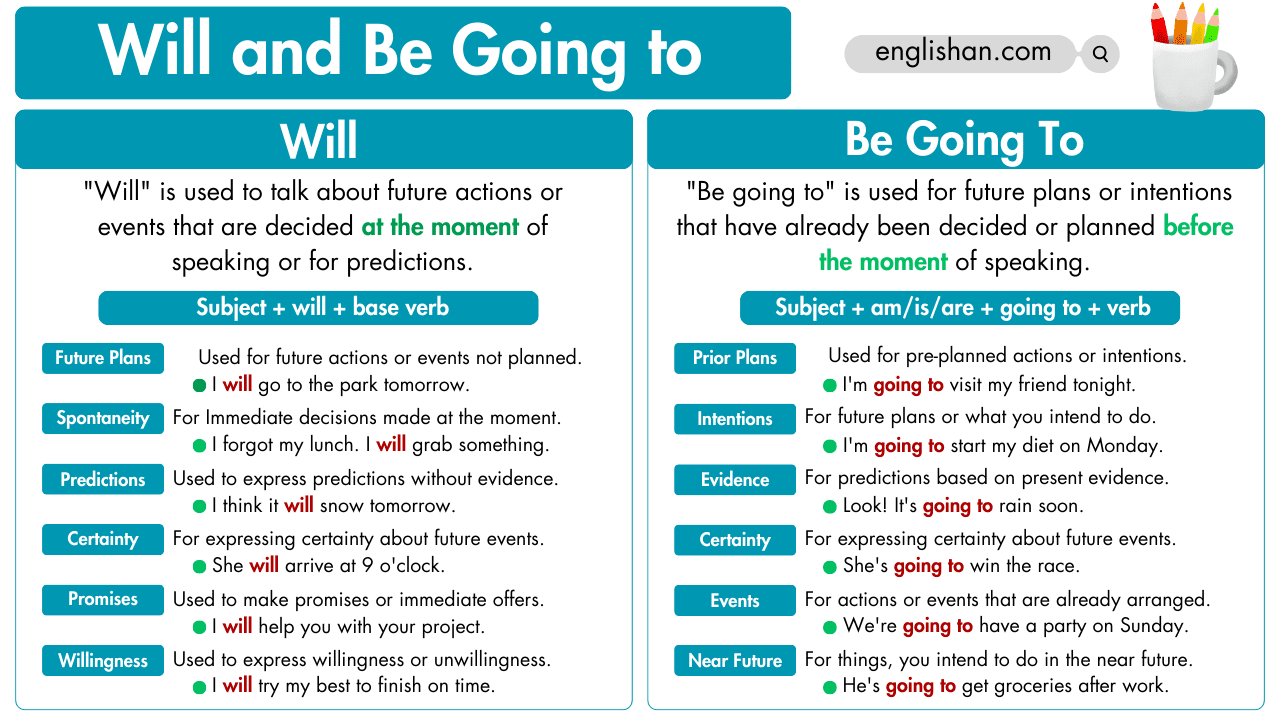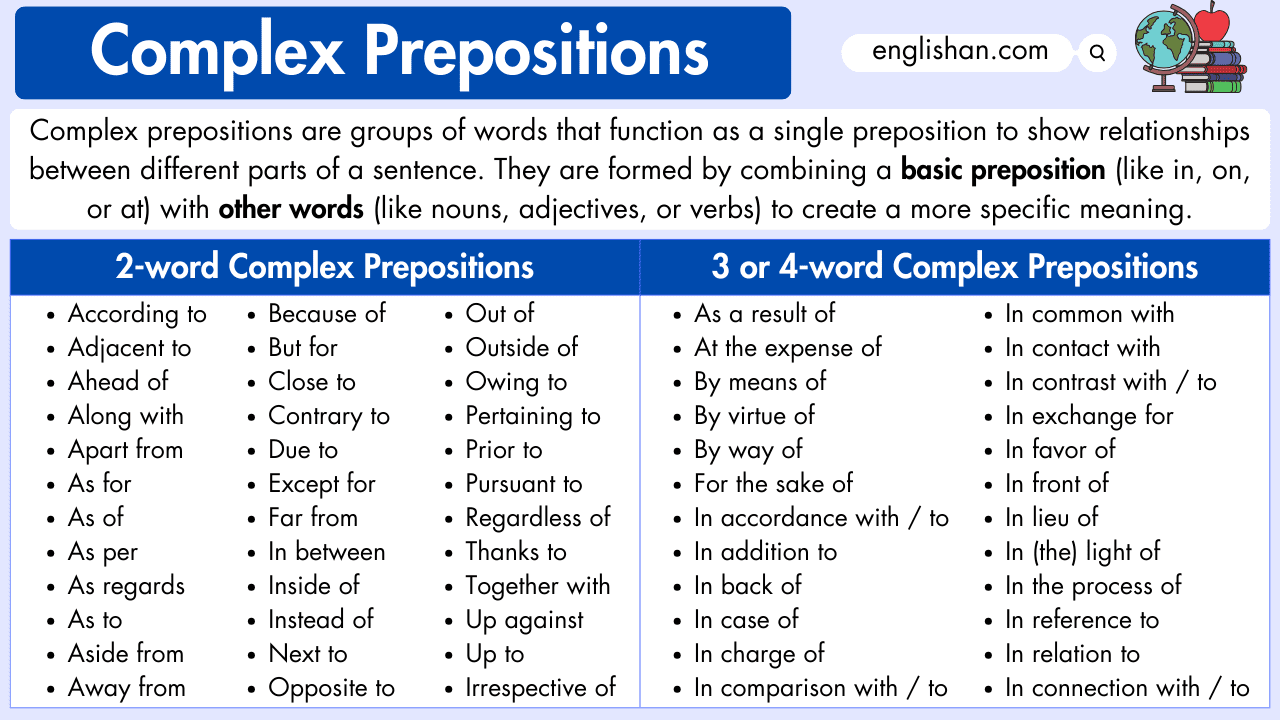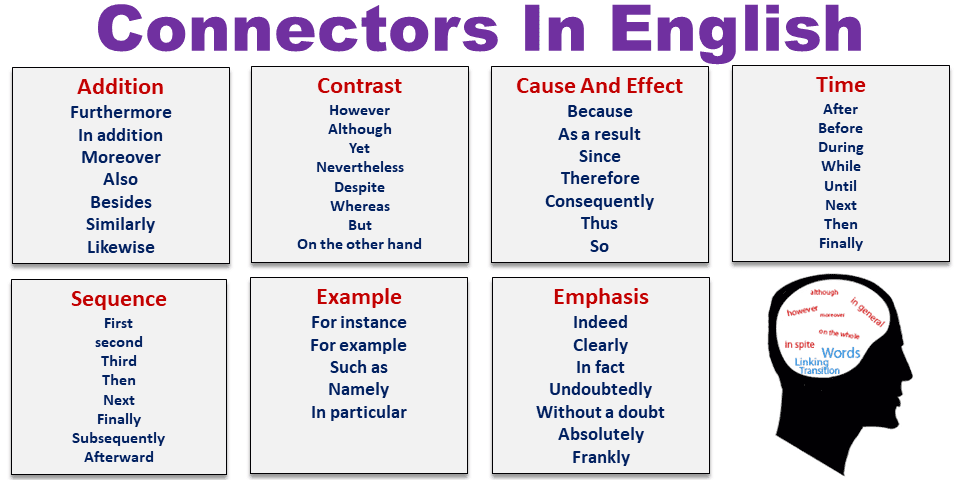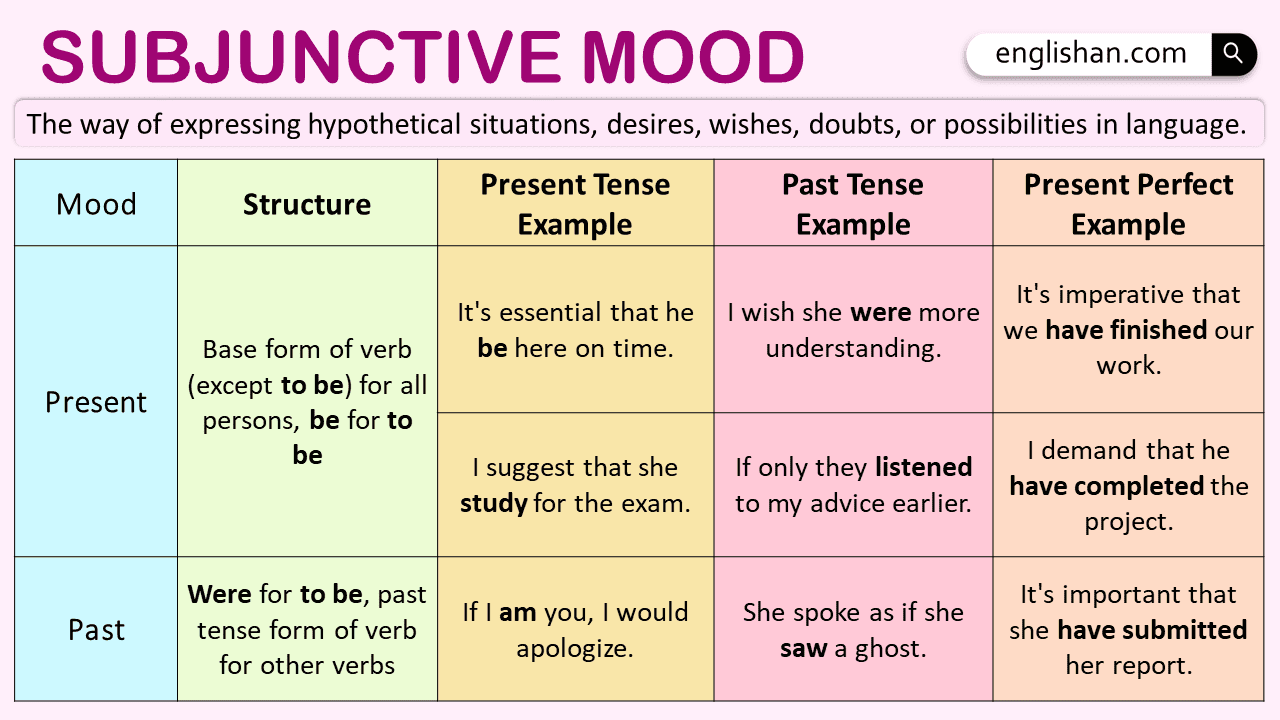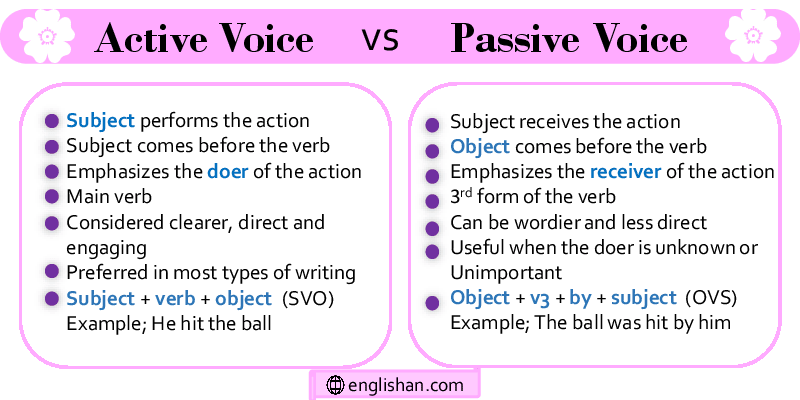Contents
Coordinating conjunctions, also known as coordinators, are essential elements in our daily communication. They are small but powerful words that help connect similar ideas in a sentence. Whether you realize it or not, you use coordinating conjunctions daily to link words, phrases, clauses, or whole sentences together. These little connectors, such as “and,” “but,” and “or,” may seem small, but their impact is mighty. In this article, we will explore what coordinating conjunctions are, their rules, and how to use them effectively with various examples to help you better understand this important grammatical concept. So, let’s get started!
What is a Coordinating Conjunction?
Coordinating conjunctions are words that connect two equal parts of a sentence, such as independent clauses or items in a list. Examples include “and,” “but,” and “or.” For instance, “She likes apples, and he likes oranges” shows how “and” links two independent clauses.
Examples:
- She likes coffee, and he prefers tea.
- It’s raining outside, so take an umbrella.
- She is intelligent, yet she is humble.
- He wanted a bike, but it was too expensive.
- You can choose the blue shirt or the red one.
Coordinating Conjunctions list
There are seven commonly used coordinating conjunctions, often remembered by the acronym FANBOYS:
For
- Usage: Indicates reason or cause.
- Example: “I waited patiently, for the bus to arrive.”
And
- Usage: Adds information, indicating a connection between elements, or lists items.
- Example: “She likes coffee, and he prefers tea.”
Nor
- Usage: Connects two negative alternatives or negates both options.
- Example: “He neither called nor sent a message.”
But
- Usage: Indicates contrast or opposition.
- Example: ” She is talented but inexperienced.”
Or
- Usage: Presents an alternative or choice.
- Example: “Would you like tea or coffee?”
Yet
- Usage: Contrasts ideas or surprise, often used in negative sentences.
- Example: “She studied hard, yet she didn’t pass.”
So
- Usage: Shows a result or consequence.
- Example: “It’s cold, so wear a jacket.”
Usage of Coordinating Conjunctions
Coordinating conjunctions are key in connecting similar ideas within a sentence. Each conjunction has a specific role, whether it’s adding information, showing contrast, or indicating a choice. Below is a breakdown of each coordinating conjunction, its function, and examples to illustrate how it’s used.
For (Explanation)
Function: Provides an explanation or reason, explaining the cause or purpose of the action in the preceding clause.
- Example: They saved money, for a special occasion.
And (Addition)
Function: Adds information, ideas, or lists items, indicating a continuation or logical connection between elements.
- Example: They went to the market and bought fresh vegetables.
Nor (Negative Addition)
Function: The negative counterpart of “and.” Introduces a negative idea, alternative negative action, or negates both options.
- Example: He neither sang nor danced at the party.
But (Contrast)
Function: Introduces a contrast or contradiction, connecting two clauses that present opposing ideas.
- Example: She is tired, but she refuses to give up.
Or (Choice)
Function: Presents an alternative or a choice between two options, used when the elements it connects are mutually exclusive.
- Example: You can have tea or coffee for breakfast.
Yet (Contrast or Addition)
Function: Can indicate a contrast similar to “but,” or add information to the existing context.
- Example: It’s hot outside, yet people are wearing jackets.
So (Result or Conclusion)
Function: Indicates a result or a logical conclusion, connecting the cause-and-effect relationship between two clauses.
- Example: It was getting late, so we decided to leave.
Coordinating Conjunction Rules
Here are some basic rules of Coordinating Conjunctions
Joining Similar Elements
Coordinating conjunctions are used to connect elements that are of the same grammatical structure. This means joining words to words, phrases to phrases, or clauses to clauses.
Example: I like both tea and coffee.
Equal Importance
Coordinating conjunctions join elements of equal importance. Each part of the sentence connected by these conjunctions should have equal grammatical weight.
Example: She is talented but inexperienced.
Comma Usage
When coordinating conjunctions join independent clauses (complete sentences), a comma is typically placed before the conjunction.
Example: I wanted to go to the concert, but the tickets were sold out.
No Comma with Coordinating Adjectives
When coordinating conjunctions connect adjectives, there is no need for a comma.
Example: “She wore a bright and colorful dress.”
Creating Lists
Coordinating conjunctions are frequently used to connect items in a list.
Example: I need eggs, flour, and sugar for the recipe.
Maintaining Parallel Structure
When coordinating conjunctions are used to connect items in a list, it is essential to maintain a parallel structure. This means that each item in the list should follow the same grammatical pattern.
Example: She likes to swim, hike, and read in her free time.
Coordinating Conjunctions Examples
- I like tea, and she prefers coffee.
- She is neither happy nor sad.
- I want to study, yet I’m feeling tired.
- Do you want pizza or pasta for dinner?
- He is smart, but he lacks experience.
- He is rich, yet he lives a simple life.
- He likes both science and art.
- I wanted to go, but it started raining.
- The book is interesting, but it’s quite long.
- I’ll visit you, but I won’t stay long.
- She is smart, yet she is humble.
- I waited patiently, for the bus to arrive.
- You can call me or send a text.
- It’s cold, but I forgot my jacket.
- I need to finish this report, so I’ll be late.
FAQs:
A coordinating conjunction connects words, phrases, or clauses that are of equal importance.
The most common coordinating conjunctions are and, but, or, so, yet, for, nor.
Examples:
1. I like apples and bananas.
2. She was tired, but she kept working.
These words help join ideas in a sentence.
There are 7 main coordinating conjunctions, remembered using the acronym FANBOYS:
1. for
2. and
3. nor
4. but
5. or
6. yet
7. so
These are the primary coordinating conjunctions. Sometimes, people include additional words like then, still, only, else, and nevertheless in certain contexts, but FANBOYS are the standard 7 used in grammar.
Examples:
I was hungry, so I ate dinner.
She likes tea, but he prefers coffee.
There are 7 main coordinating conjunctions, remembered by FANBOYS:
1. for
2. and
3. nor
4. but
5. or
6. yet
7. so
Some lists may include additional words like:
8. then
9. still
10. only
11. else
12. nevertheless
However, the FANBOYS are the core coordinating conjunctions used in standard grammar.
Examples:
I like apples and bananas.
She was tired, but she kept working.
Coordinating means joining equal things.
Examples:
1. I like apples and bananas.
2. She is tired, but she works.
3. Tea or coffee?
It connects ideas simply.
Here are 12 examples of conjunctions with sentences:
1. I like tea and coffee.
2. She is tired, but she keeps working.
3. Do you want tea or juice?
4. He was hungry, so he ate.
5. She studied, yet she failed the test.
6. I stayed home, for it was raining.
7. He didn’t call, nor did he visit.
8. I left early because I was tired.
9. Although it was cold, we went out.
10. You can join us if you want.
11. I will go when it stops raining.
12. I won’t go unless you come.
These conjunctions join words and sentences.
You May Also Like
